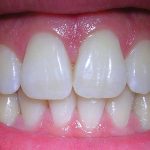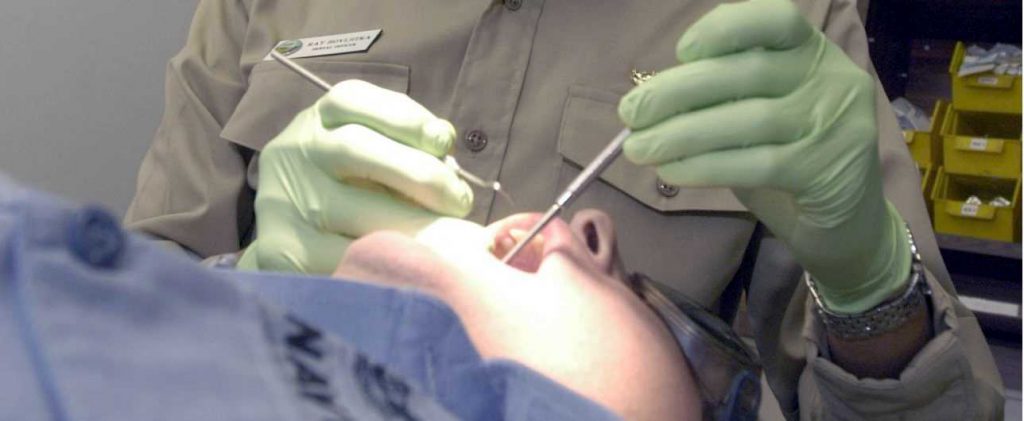Why You Need Professional Dental Cleaning
 Visiting your dentist every six months for a professional dental cleaning and checkup is crucial to maintaining a healthy smile. Regardless of how diligent you are in brushing and flossing your teeth, you will still need dental cleaning at a dentist every six months to clean those areas that are impossible to clean at home. Also, tartar buildup cannot be cleaned away with your toothbrush.
Visiting your dentist every six months for a professional dental cleaning and checkup is crucial to maintaining a healthy smile. Regardless of how diligent you are in brushing and flossing your teeth, you will still need dental cleaning at a dentist every six months to clean those areas that are impossible to clean at home. Also, tartar buildup cannot be cleaned away with your toothbrush.
Most people do not understand that early stages of serious dental problems are rarely accompanied by symptoms. Quite often, a person will not realize there is a problem until a dentist diagnoses it or until the problem has advanced to the point where it is causing serious dental pain. There are many problems that can only be diagnosed by a professional dentist.
If you limit your intake of foods like cookies, pastries, candy, soft drinks, and chewing gum and replace them with snacks like fresh fruit (which is lower in sugar), you will significantly reduce your risk for tooth decay and gum disease.
The techniques used in teeth cleaning have changed significantly over the past 20 years. Today’s dental techniques have made the professional cleaning procedure relatively quick and painless.
A cleaning may be performed by a dentist or a dental hygienist (a specially trained dental professional). The teeth cleaning consists of scraping off the hard material buildup with a dental scaler or an ultrasonic machine, which uses sound waves to remove the plaque. The plaque is then rinsed off.
After the teeth are cleaned, they are then polished using a special material and a cup-shaped instrument. After the cleaning, your teeth will feel smooth and fresh.

Dental Examination
The dental examination explores not just your current tooth condition, but your entire oral cavity. A complete dental examination includes your:
- Teeth cleaning, gums, cheeks, tongue, and palate
- Head and neck, TMJ, skin, glands, lips
- Bite and smile
Regular dental cleanings are critical to the prevention of tooth decay, gum disease, and other dental disorders that can lead to serious oral problems. Once tooth decay or gum disease begins, it will continue to spread to other areas in the mouth. Quite often, a person won’t even realize that he or she has a problem until a painful symptom is present.
Prevention of many common dental disorders is easy as long as you have a good oral regimen and visit your dentist every six months for professional cleanings and evaluations.
If you are a first-time patient or haven’t been to the dentist in a while, here is what you can expect when you visit the dentist for an examination.
Medical and dental history
Before your dental exam begins the dentist will need to know your medical and dental history. This is usually accomplished by filling out a questionnaire. Once the dentistis familiar with any special conditions or allergic reactions that may affect your exam, he can then proceed.
The teeth
Using special instruments, the dentist will look for any evidence of tooth decay, and perform on the spot teeth cleaning when deemed necessary. The dentist will also check for any abnormalities in your bite (the way the teeth come together when your mouth is fully closed). An irregular bite can lead to uneven or excessive wear on the affected teeth and may lead to other dental problems in the future.
The gums
The dentist will examine the condition of the gums to make sure they aren’t inflamed or soft. The tool used for this is called a “periodontal probe.” This probe measures the depth of the sulcus (the area where the gum and tooth meet). Large pockets in the sulcus are signs of early gum disease and should be treated with proper dental cleaning.
Other tissues inside the mouth
The dentist will look for any irregularities on the tongue, cheeks, and lips. Many times during a dental cleaning, a dentist is the first to diagnose certain types of oral cancer. Many types of oral cancer that are caught in the early stages can be treated and eventually eradicated.
Radiographs (x-rays)
X-rays help the dentist observe any abnormalities in the mouth that cannot be seen with the naked eye. The dentist is able to see the extent of any tooth decay or minute fractures in the teeth.
